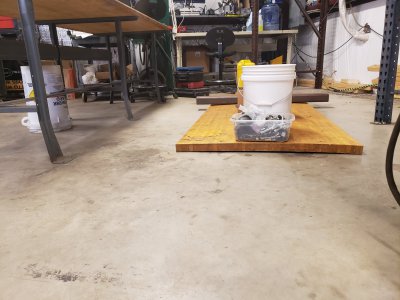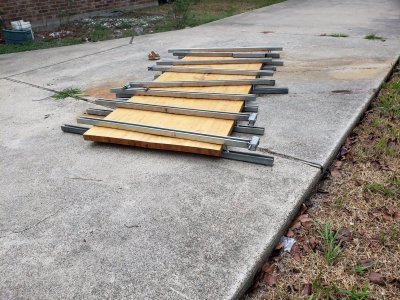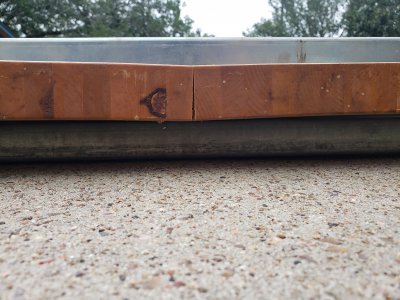- Joined
- Oct 29, 2012
- Messages
- 1,329

The table top on the floor is the same type as the bench to the left. The one on the floor I took apart a few years ago and left the table top leaning long-ways against the wall. Apparently over time it drooped under its own weight. Now I want to reassemble and use it again, preferably in its former flat form.
As you can see I've stacked some random heavy-ish stuff on it to try and flatten it out but my intuition tells it might take years for that to work. I'm going to check it again in 24 hours and see if there has been any progress but I don't expect any. That's why I'm asking.
I have a feeling that some heat would quicken the process, maybe I could set up a heat gun to blow underneath it. But I worry that might compromise the glue that binds it, and then it could split.



